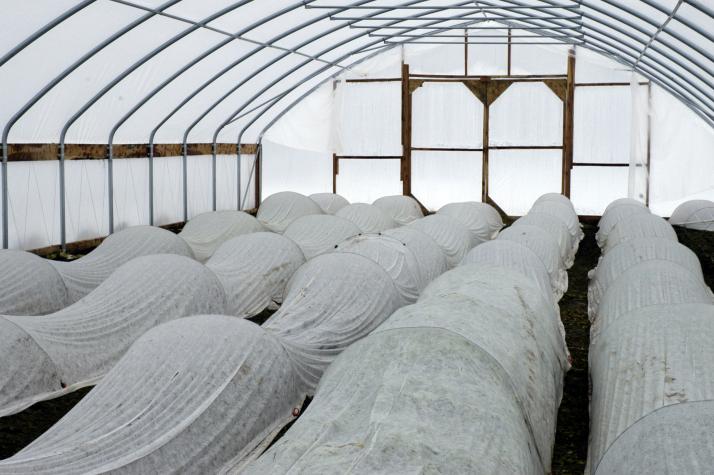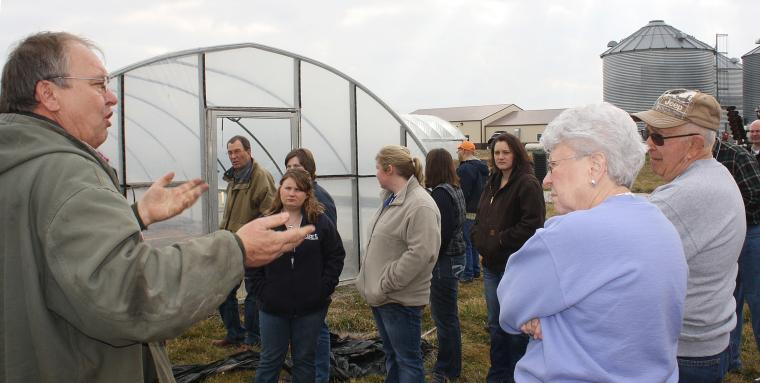COLUMBIA, Mo. – “We are in a food production revolution,” University of Missouri Extension horticulture specialist David Trinklein told agriculture educators recently at MU’s Bradford Research and Extension Center.
High tunnels have grown in popularity in recent years, partly because of increased interest in locally grown produce, which tends to be fresher and more flavorful, Trinklein said.
Farmers use high tunnels to extend the growing season, boost production and increase marketing opportunities, he said. “Prices are very strong and interest has been growing,” he said.
Although high tunnels resemble greenhouses, they are quite different. High tunnels primarily use solar heat to warm the soil and air. They are less expensive to build and maintain than greenhouses.
Often referred to as “a poor man’s greenhouse,” high tunnels are constructed “with economy in mind,” Trinklein said. They are typically constructed using a single layer of plastic over metal ribs. Side and end walls can be rolled up or down as needed to adjust temperatures through venting. Commercial greenhouses may cost more than $20 per square foot to construct, while high tunnels may cost as little as $3 to $5 per square foot.
Crops are planted directly in the ground and drip irrigation generally is used. Because high tunnels have large doors in their end walls, tilling equipment can be used in them much like in outdoor production.
At night, temperatures in high tunnels average 4 degrees Fahrenheit warmer than outside, protecting plants from frost an extra two to four weeks in spring and fall. Floating row covers placed over crops inside the high tunnel give additional protection from the cold.
High tunnels also offer shelter from wind, hail and insects, reduced disease pressure and the ability to control water supply.
Because of earlier maturity, produce from high tunnels brings in significantly more dollars per plant than conventionally grown plants, with early-season crops commanding the best prices of the season.
Tomatoes are one of the most popular high tunnel plants. “Tomatoes are king,” Trinklein said. “Early-season tomatoes are big, big moneymakers,” he said, noting that some early-season tomatoes fetched $4 per pound at farmers market auctions last year. Crops such as lettuce and salad greens can be grown in fall and winter, making them marketable to high-end restaurants.
High tunnels do have some drawbacks, Trinklein said. They are labor intensive and require regular monitoring of temperatures. They are at risk of damage from snow accumulation and heavy wind. High humidity in the tunnels early in the growing season can lead to increased disease problems. Finally, construction requires startup costs above and beyond conventional outdoor production.
To learn more, see this list of information and resources on high tunnels on the MU Extension website.

